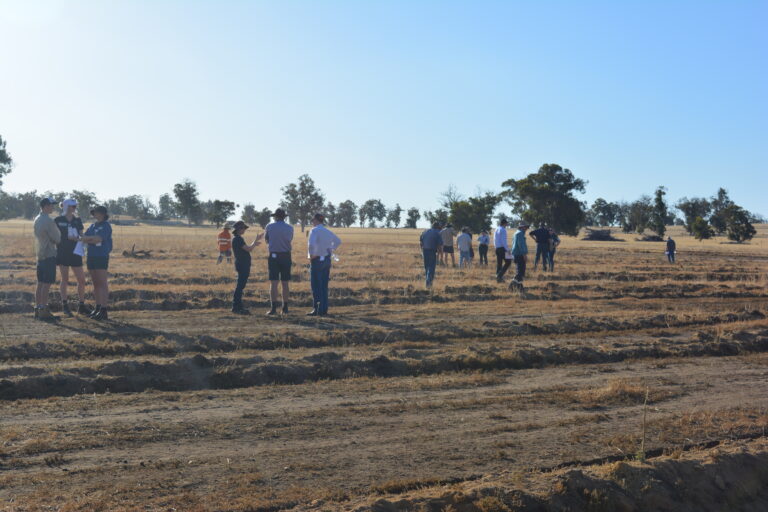Native vegetation can assist farm productivity by supporting canola pollinators and predators of aphids and caterpillars.
That was the key take-home message from the ‘Building Resilience on Farm’ event held at Kojonup in February by Southern Dirt, with support from South West NRM and Rabobank.
South West NRM’s pollinator project manager, Wendy Wilkins, described international research which has shown that proximity to semi-natural habitat increases the diversity and abundance of pollinators in crops and that insect pollination has significant benefits to canola such as increased fruit set, seeds per pod, and seed mass. The study found that pollinators increased seed production by 35%, and proximity to semi-natural habitats by 34%. Another study on canola from Central Western France found an average yield increase of 37.5% through pollination.
Following this research, South West NRM has been conducting trials on using revegetation and interrow cropping to attract pollinators and beneficial insects to farms. As part of these trials, South West NRM developed a flowering calendar for the Blackwood Valley and the Wheatbelt to help inform revegetation targeting beneficial insects. For more information on this project, click here.
Svetlana Micic, an entomologist with DPIRD specialising in broadacre pest management, continued the theme of the importance of biodiversity. She explained how flowering plants in native vegetation provides food sources for wasps, which are predators of aphids and caterpillars.
Svetlana also noted that redlegged earth mite (RLEM) that are resistant to insecticides are now commonly found in parts of WA. Although RLEM are only found on weeds, they can harbour in parts of the paddock that are unable to be sprayed or heavily grazed such as the edges of native vegetation.
The French anystis mite is a predator of RLEM which thrives in those same parts of paddocks that harbour the RLEM and can effectively control up to 80% of a RLEM population. By planting native vegetation with a good lower understorey, weeds are outcompeted, providing habitat for beneficial predators of pest species.
Svetlana spoke of the years where there is summer rainfall and a ‘green bridge’, where pest populations survive in green weeds before moving into paddocks. Native vegetation that has no brassica or grass weeds does not harbour pests such as aphids and diamondback moths. Even though some invertebrate pests such as the European earwig will harbour in native vegetation, it is only on the edges.
The day also included a tour of a 6.5ha site led by Executive Officer of Southern Dirt, Adele Scarfone, who together with farmer, Tamesha Gardner, spoke about the preparation, establishment and grazing of the perennial forage and saltland pasture plants. The project cost an average of $3,190 per hectare for planting forage shrubs, seeding pasture and installing fencing. Species used included tall fescue and crimson clover and shrubs such as Atriplex semibaccata and Rhagodia preissii. Forage shrubs can offer a quality source of dietary protein, minerals, and vitamins which may not be provided by other pasture plants.
Wendy said: “I was pleased to see in the event feedback that attendees see revegetation as a worthwhile activity and beneficial for the future and farming. They could see how diversity builds resilience.”
This event was supported by South West NRM, through funding from the Australian Government’s National Landcare Program.

